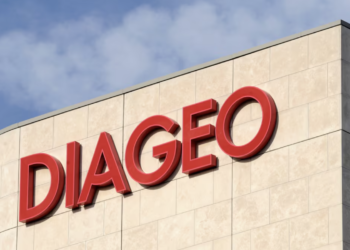Government borrowing is increasingly crowding out Kenya’s private sector, as commercial banks opt to lend to the state over businesses, putting a strain on credit availability for enterprises struggling with high-interest rates.
According to a new report by Cytonn Investments, Kenya’s private sector credit growth dropped to 4.0% as of June 2024, marking the slowest pace since 2019, as banks prioritize safer investments in government bonds and treasury bills.
“Commercial banks continue to hold the highest proportion of government domestic debt, accounting for 45.0% as of September 2024, reflecting the growing competition for credit between the state and private businesses,” the report states. This preference is attributed to the risk-free nature of lending to the government, which offers guaranteed returns, unlike the riskier private sector where default rates have risen.
The government’s domestic borrowing, which has ballooned to KES 5.7 trillion in 2024 from KES 1.3 trillion in 2014, has tightened liquidity in the credit market, with banks becoming more selective about who gets loans. “Heavy government borrowing from the domestic market competes with private sector borrowers for available credit,” the report warns.
Kenya’s small and medium-sized enterprises (SMEs) are particularly vulnerable, as they face difficulty securing affordable loans to finance growth. SMEs, which make up 90% of all businesses in the private sector, have historically struggled to access credit due to high-risk perceptions among lenders. “Private sector credit growth has been on a downward trajectory in 2024, largely driven by reduced borrowing capacity by businesses and households as a result of higher interest rates,” the report notes.
The Central Bank of Kenya (CBK) has attempted to stem the tide by cutting its benchmark interest rate by 25 basis points to 12.75% in August 2024, in a bid to encourage more borrowing. However, experts warn that the benefits may be short-lived unless the government reduces its domestic borrowing or finds alternative funding sources. “A stronger Kenyan Shilling and tighter monetary policy have kept borrowing costs high, meaning businesses, especially SMEs, are still facing significant barriers to accessing credit,” the report states.
High Cost of Credit Limiting Private Sector Growth
The cost of borrowing has remained prohibitively high, with interest rates standing at an average of 16.8% in July 2024, just slightly down from 16.9% in June. In addition to interest, businesses also face various overhead costs such as bank fees, legal expenses, and insurance premiums, further inflating the cost of credit.
The report highlights that private sector lending from banks is heavily concentrated in just a few sectors, with trade, manufacturing, and private households taking up the largest portions of total credit extended. As of May 2024, trade received KES 642.8 billion, or 16.9% of total credit, while manufacturing and private households accounted for 15.3% and 14.9%, respectively. Agriculture and mining, despite being critical sectors for Kenya’s economy, lag behind in credit allocation, though they showed strong year-on-year growth at 9.9% and 47.2%, respectively.
Calls for Diversification of Funding Sources
The report calls for a diversification of credit sources to reduce the country’s heavy reliance on commercial banks, which provide 81.9% of all private sector credit. “Exploring alternative credit channels, such as capital markets, venture capital, and non-banking financial institutions, is essential for building a more resilient and diverse credit ecosystem,” it advises. Currently, 95.0% of business financing in Kenya comes from banks, with only a minimal portion sourced from capital markets.
Initiatives such as the Hustler Fund and the Credit Guarantee Scheme (CGS), designed to boost credit access to underserved groups, including SMEs and low-income individuals, are seen as steps in the right direction. However, the report emphasizes the need for more comprehensive reforms to encourage banks to lend to the private sector and reduce their reliance on government debt.
Despite the recent monetary policy adjustments, Cytonn remains cautious about the outlook for private sector credit growth in the near term. “With the government’s domestic borrowing showing no signs of abating, the crowding out effect is expected to persist,” the report concludes.


















